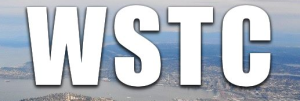This morning just after 6:00 AM, a van spun out and hit the guard rail on the northbound lane and crashed. It took the City of Seattle nearly two hours to get this cleared up. Multiple reports came in from hundreds of people of traffic backed up in every direction, from the stadiums back to the middle of West Seattle, all the way south past the 1st Avenue South Bridge. In short, it was a completely non-managed fiasco, and it was over the past several weeks at least the fifth time there was a major commuter transportation disruption for the West Seattle peninsula, between accidents and mistakes by government agencies. Reports across the news media and in various comment sections (and SDOT web cams) showed backups and damage from the event continuing well past 10:00 AM.
We saw nearly four hours of systemic disruption from a single crashed van that merely needed to be towed. On a weekday, there is no excuse for why the city could not get this cleared swiftly. The crash took place, as the crow flies, less than a half mile from Seattle’s City Hall and mere blocks from downtown. If we cannot service a critical north-south commuter corridor in the heart of our urban core for hours, things need to be addressed and remediated from a very high level.
In light of this, the West Seattle Transportation Coalition mailed this morning to City of Seattle Mayor Mike McGinn; Mayor-elect Ed Murray; Councilmember Tom Rasmussen, chair of the City Council’s Transportation Committee; and DeAnna Martin, Community Relations Planner from King County Metro. We asked them the following five questions:
Hello,
We are mailing in regards to the events today on the Viaduct which affected all commutes from West Seattle and points south. This was today’s event:
http://westseattleblog.com/2013/12/traffictransit-today-frozen-friday-updates
We have had now, approximately, four out of the last six commute days with extraordinary events and anger is clearly beginning to boil over with the public over the ongoing nature of these issues and our limited, declining transportation options in West Seattle.
In order for us to transmit an explanation to our very large membership of up to 68,000 individuals, could the following be answered?
1. Why did it take two hours for a tow truck to clear an accident from the northbound viaduct this morning, when the accident happened at the height of rush hour?
2. If this was a situation where no third party tow truck was available in a timely fashion, what is the city willing and prepared to do to ensure that there will be one available in an extremely timely and highly efficient fashion going forward?
3. If this was a situation where the tow truck itself had to “fight” its way through the traffic jam itself, is there a protocol for SPD to escort safely the tow truck from the opposite direction to quickly and efficiently clear the scene?
4. If there is no such protocol as described in question #3, why not, and what steps are required for this to happen in all future incidents?
5. What sort of immediate communication was issued to Metro drivers ordering them to re-route and bypass the Viaduct, and what time was that done?
We look forward to a prompt answer to each question and steps taken to permanently ameliorate the process for these events. Seattle–not just West Seattle–has a number of critical transportation choke points in our various bridges. There must be a clear, defined, ruthlessly enforced and funded process for addressing these issues as they arise. Failure to do so and failure to address this would be unacceptable for the following reasons:
- It transfers tremendous personal costs in both lost time and lost money to commuters.
- It transfers directly financial costs in income lost for hourly employees, particularly low-income and working class employees, and those reliant upon child care.
- It passes tremendous costs forward and onto employers and businesses in terms of lost productivity, sales, and revenue.
- It allows for massive systemic disruption of our entire transportation and mass transit infrastructure, inconveniencing and passing those costs to citizens and employers across the city. As, in this case, Rapid Ride C from West Seattle is delayed for two hours, so is every Rapid Ride D that services north of the Ship Canal.
All this completely unnecessary disruption and harm to tens of thousands, for want of a single tow truck.
Thank you for your continued service and partnership.
We plan on following up on this and pursuing it until we have answers to each of the five questions in full, and until all five answers are publicized here. After the levels of raw frustration and anger we saw displayed today, the neglect in planning for West Seattle’s peninsula and residents in transportation matters has gone well past the point of reasonable patience on our part. There is no legitimate reason for us to have to wait any further for solutions.
If you would like to help us work on these issues, please check our page on volunteering, or you can simply “Like” us on Facebook here to keep updated.

